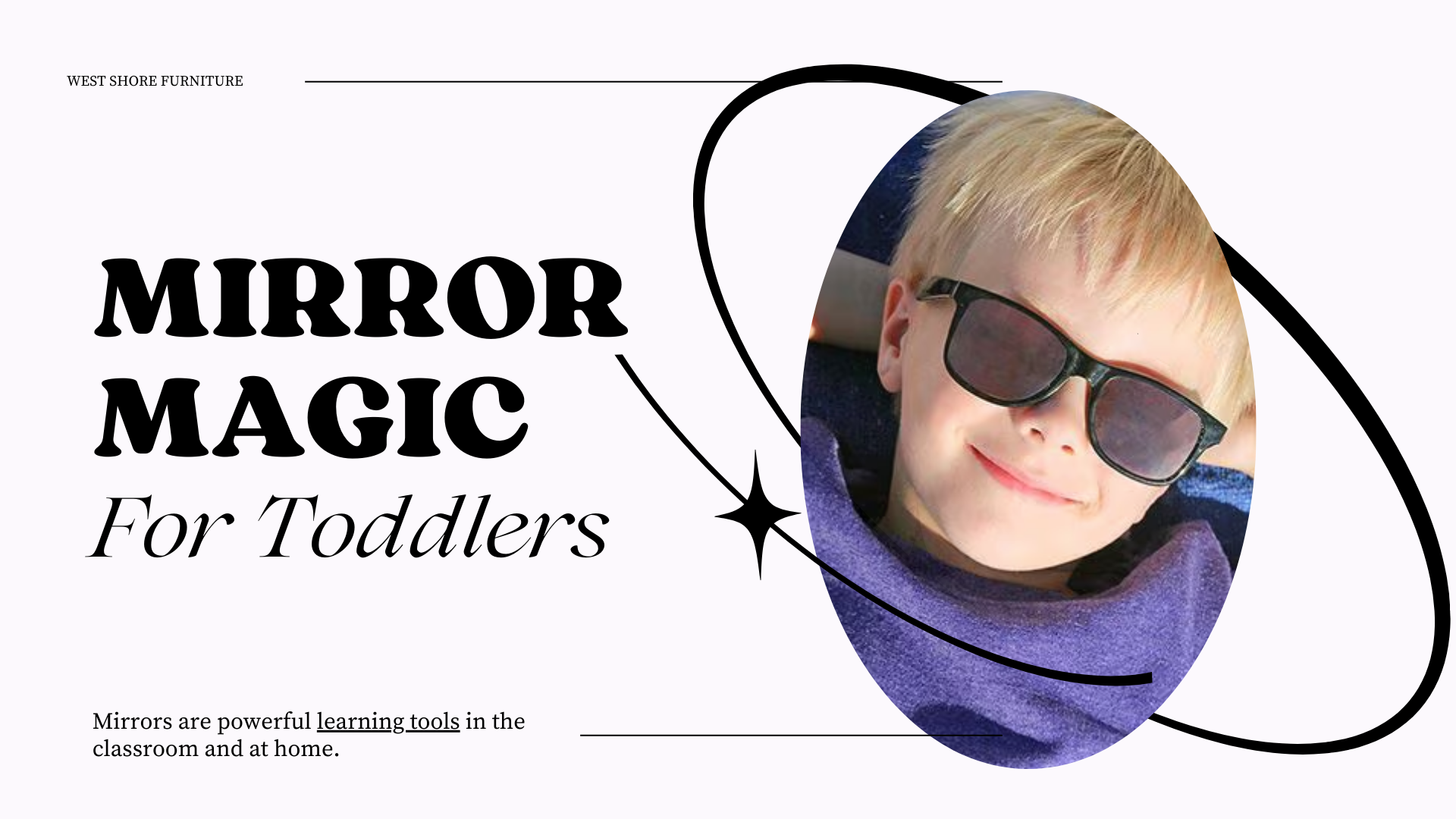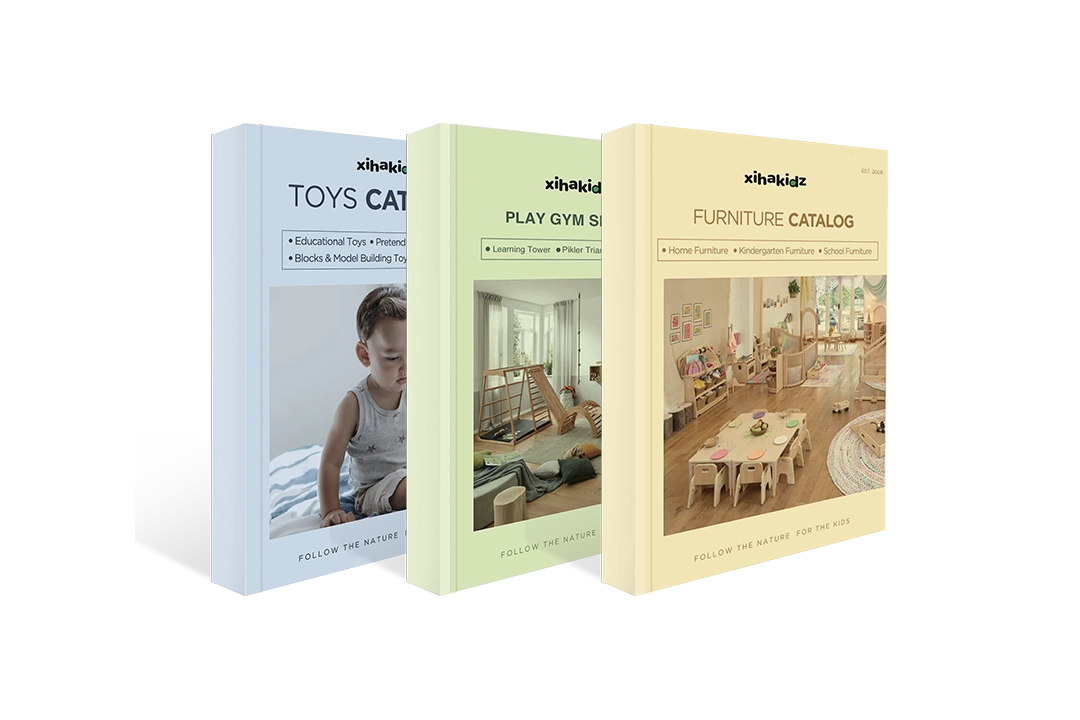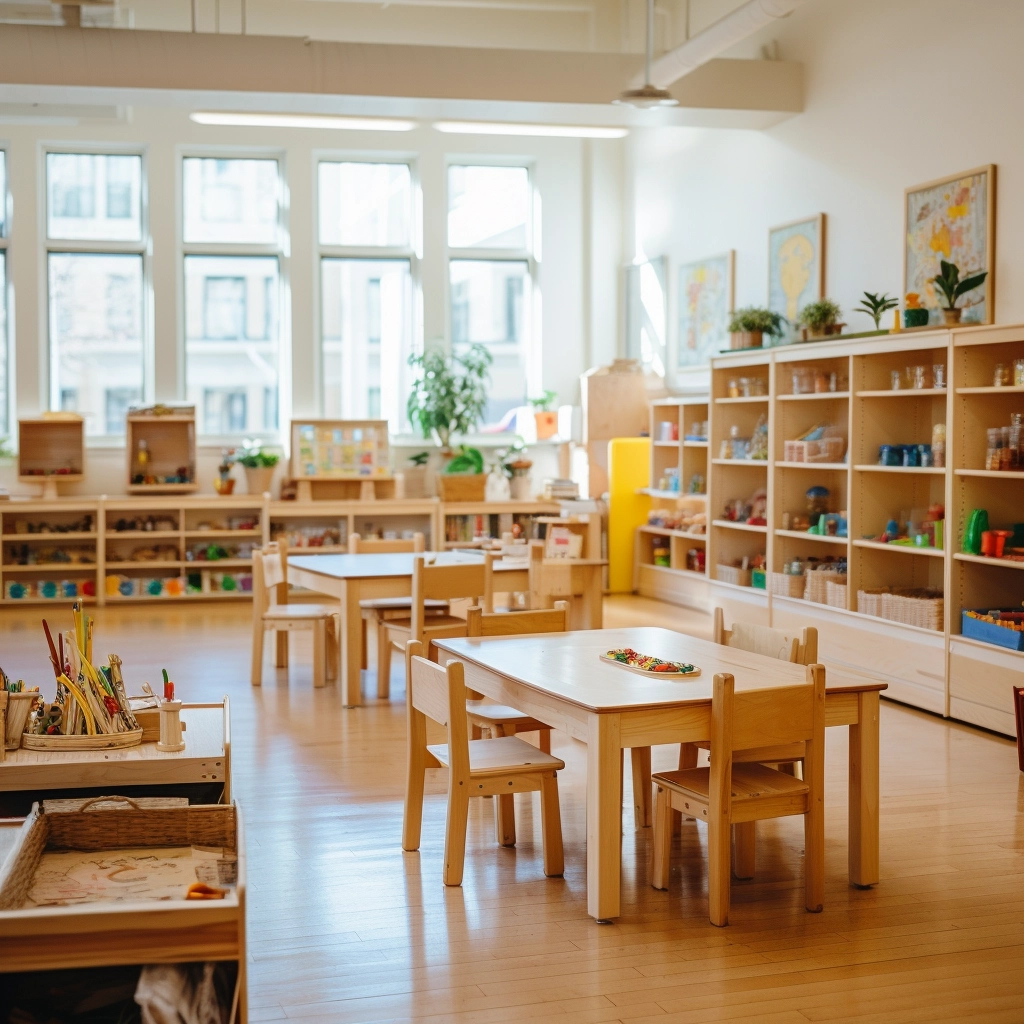Have you ever considered how something as simple as a mirror can boost a child’s learning experience? Can playing with mirrors in early childhood education, whether through car mirrors for infants or mirror activities in the classroom, help children develop essential skills? Have you considered how mirror reflection can contribute to their cognitive growth? Mirrors do more than reflect images—they play a crucial role in helping children understand themselves, their environment, and the world around them. But how can we use this simple yet powerful tool to maximize its benefits in children’s development?
Mirrors are incredibly effective learning tools in the classroom and at home. They encourage self-awareness, creativity, motor skills, and cognitive development. Introducing children to reflective surfaces, such as playing with mirrors, can help them develop a strong foundation in essential areas like emotional understanding, problem-solving, and spatial awareness. Whether used for a toddler’s art project or incorporated into an educational game, mirrors are versatile and engaging tools that foster various developmental activities.
Let’s explore the fascinating world of mirror play and discover how it can become one of the most valuable resources in early childhood education!

The Educational Significance of Mirrors in Early Childhood Learning
Mirrors have long been considered a tool for reflection and a fundamental educational resource in early childhood development. Mirrors in early learning settings offer numerous cognitive, physical, and emotional benefits. Mirrors are more than just objects for children to admire their reflections—they are gateways to a deeper understanding of self-awareness, spatial recognition, and cognitive development. Explore our high-quality children’s mirrors designed for early childhood learning and discover how they can benefit your educational environment.
1. Self-Awareness and Emotional Development
One of the mirrors’ most significant educational roles in early childhood education is helping children develop self-awareness. When children first interact with mirrors, they begin to recognize themselves and distinguish their image, a developmental milestone known as self-recognition. This process often starts around six months, when infants can identify their reflection in mirrors.
The act of playing with mirrors also enables children to understand their own emotions better. By observing their expressions and gestures in the mirror, they can associate different emotions with their reflection in mirrors. For instance, a child may notice a frown and connect it to feelings of frustration, thereby learning to recognize emotions through visual cues.
2. Cognitive and Motor Development
Playing with mirrors is a fantastic tool for enhancing cognitive and motor development. Children experiment with movements in front of a mirror, which helps them gain better control over their physical movements. Observing themselves allows them to understand their body’s coordination, aiding in developing fine and gross motor skills.
In addition, playing with mirrors fosters spatial awareness. For example, children may mimic actions like clapping or spinning, enhancing their body coordination and understanding of balance. Reflection in mirrors supports learning about symmetry and helps children better understand their physical actions.

3. Social Development
Mirrors also help children with social development. By playing with mirrors, children can observe how different facial expressions influence social interactions. They may experiment with expressions like happiness, anger, or surprise, watching how these emotions manifest on their faces. This activity helps children become more attuned to social cues, improving their empathy and understanding of others’ feelings.
In group settings, mirrors can be an excellent tool for collaborative play, allowing children to observe and mimic their peers’ behavior. For example, they might copy a friend’s gestures or expressions, helping to strengthen social bonds and improve their ability to empathize with others. Mirrors can also be used in discussions about body language, facial expressions, and communication, helping children to develop vital social and communication skills.
4. Spatial and Visual Perception
Mirrors are invaluable for teaching children spatial and visual concepts such as symmetry and angles. Through playing with mirrors, children can explore the reflection of shapes, objects, and even their movements. This helps to improve their understanding of geometry and visual perception, two fundamental aspects of early cognitive development.
For example, children can use a mirror to complete a drawing of an object, learning about symmetry and how one side mirrors the other. This exercise enhances their spatial awareness and encourages critical thinking about the world around them.
Here are six detailed and exciting mirror-related activities, each designed to engage young learners in creative and educational ways:
Playing with Mirrors: Painting
Activity Overview: Mirror Painting is a fun and creative activity where children use mirrors as reflective surfaces to create colorful artwork. They can either paint directly on the mirror or paper and view it through it to explore symmetry and reflection.

Benefits:
- Cognitive Skills: This activity helps children think critically about shapes, symmetry, and color. It allows them to experiment with how images appear when reflected.
- Motor Skills: Mirror painting improves fine motor skills as children paint with brushes or their hands.
- Artistic Expression: Children can express themselves artistically through color, shapes, and patterns, boosting their creativity.
How to Do It:
- Set up a large mirror on a wall or a stable surface.
- Provide children with washable paints, brushes, and sponges.
- Allow them to paint on the mirror’s surface or paper and hold it up to the mirror to observe the reflected version of their artwork.
- Encourage them to create symmetrical designs or experiment with reflections.
Playing with Mirrors: Drawing
Activity Overview: Mirror Drawing uses mirrors to help children create half of an image and then complete the other half using the reflection. Children can draw one side of a picture or design, and the mirror helps them finish the mirrored version.

Benefits:
- Spatial Awareness: Children develop an understanding of symmetry and balance, helping them recognize how objects fit together.
- Fine Motor Skills: Drawing requires precision and helps improve hand-eye coordination.
- Problem-solving: Children learn to complete the image using the mirror’s reflection, enhancing their critical thinking and problem-solving abilities.
How to Do It:
- Give the children a piece of paper and a mirror.
- Encourage them to draw half an object (e.g., a butterfly, face, or house) on the paper.
- Position the mirror at the center of the paper, allowing them to complete the other half through the reflection.
- Discuss the concept of symmetry and reflection with them.
Playing with Mirrors: Loose Parts Outside
Activity Overview: Mirror Play with Loose Parts involves using mirrors outdoors to interact with natural materials such as leaves, sticks, and rocks. Children can explore how these objects create reflections and how the angle of the mirror changes the view.

Benefits:
- Exploration and Inquiry: Children engage in active exploration, manipulating both natural objects and mirrors to stimulate curiosity and critical thinking.
- Physical Development: The activity encourages movement and gross motor skills as children arrange objects and adjust the mirrors.
- Creativity: Children can create patterns and structures using loose parts, enhancing their creative thinking.
How to Do It:
- Set up a large mirror in an outdoor space where children can interact with it and natural materials.
- Provide various loose parts such as leaves, sticks, stones, and pinecones.
- Let children arrange these objects in front of the mirror to see how the arrangement affects the reflection.
- Discuss how the mirror changes what they see and encourage them to create visual patterns or designs.
Playing with Mirrors: Lucite Cubes
Activity Overview: Mirror Play with lucite cubes uses transparent or semi-transparent lucite cubes and mirrors to create reflective, colorful effects. Children arrange the cubes in different positions to explore light, shapes, and reflections.

Benefits:
- Light and Reflection Exploration: Children learn about light reflection and how different angles affect visual effects.
- Critical Thinking: Arranging cubes in various patterns helps children understand spatial relationships and symmetry.
- Fine Motor Skills: Stacking and moving the Lucite cubes enhance hand-eye coordination and dexterity.
How to Do It:
- Provide children with a set of Lucite cubes and a mirror.
- Let them stack, arrange, and experiment with the cubes in different formations.
- Place the cubes in front of the mirror and observe how the reflections change based on their positioning.
- Discuss how the light and angle of the cubes create different reflections and visual effects.
Playing with Mirrors: Toy Shelf
Activity Overview: A Mirrored Toy Shelf combines play with the opportunity to explore reflections. A mirror is placed underneath a shelf of toys, and as children interact with the toys, they see their reflections and can explore how the toys look from different perspectives.

Benefits:
- Spatial Reasoning: Children learn about positioning, reflections, and symmetry by observing toys from various angles.
- Imaginative Play: The reflective surface encourages imaginative play as children create new scenarios based on how toys appear in the mirror.
- Organizational Skills: Sorting and arranging toys on the shelf helps children practice categorization and organization.
How to Do It:
- Place a large mirror under a shelf or on the floor.
- Arrange a variety of toys on the shelf.
- Let children interact with the toys and explore how they look in the reflection.
- Encourage them to imagine stories or scenarios based on the mirrored perspective.
Playing with Mirrors: Playdough
Activity Overview: Mirror Play with Playdough allows children to shape playdough while observing their creations in a mirror. This activity encourages them to experiment with symmetry, shapes, and colors as they mold and shape the playdough before the mirror.

Benefits:
- Creativity: Children develop their creative and artistic skills by shaping and molding playdough into different forms.
- Symmetry and Geometry: This activity enhances their understanding of symmetry and geometry as they create mirrored objects.
- Sensory Play: The tactile experience of working with playdough helps children develop sensory skills and fine motor control.
How to Do It:
- Provide children with a mirror, playdough, and a flat surface.
- Encourage them to create various shapes, such as animals, faces, or abstract forms, with the playdough.
- Place their creations in front of the mirror and let them explore how the reflections change their perception of the shapes.
- Discuss the symmetry and reflection they observe and encourage them to make mirrored versions of their creations.
The Benefits of Mirror Activities in Early Childhood
Mirror activities offer an incredible range of developmental benefits for young children. When integrated into learning environments, these activities stimulate growth in multiple areas, from physical skills to emotional intelligence. Let’s examine the key benefits of mirror activities for early childhood learning.
1. Enhancing Cognitive Skills
Mirrors stimulate cognitive development by encouraging children to think critically about their surroundings and their relationship with themselves. When children interact with mirrors, they engage in active problem-solving and exploration. This process fosters logical thinking as they try to understand how their reflection corresponds to real-world actions. Mirror-based activities such as matching shapes, identifying colors, or sorting objects by size and symmetry encourage early learning in a hands-on way, helping children develop fundamental cognitive skills.
Furthermore, mirror activities can enhance memory and attention. For example, children might engage in a game where they must mimic movements or facial expressions observed in the mirror. This type of activity challenges children to recall and reproduce complex sequences, which can improve their working memory and attention span.
2. Improving Motor Skills
Mirror activities play a crucial role in developing fine and gross motor skills. By engaging in movement-based activities in front of a mirror, children can see how their bodies move and adjust. This feedback loop helps improve coordination and body control, essential for mastering tasks like running, jumping, drawing, or even using utensils.
For instance, jumping jacks, spinning, or hopping on one foot in front of a mirror help children strengthen their gross motor skills. Likewise, when children practice drawing shapes or writing letters while observing their movements in the mirror, they enhance their fine motor skills. The mirror’s immediate feedback is crucial in helping children fine-tune their movements and refine their skills.
3. Boosting Emotional Intelligence
Mirror activities also support the development of emotional intelligence. Through reflection, children can explore their emotions and learn to recognize and label their feelings. This helps them become more aware of their emotional responses and develop empathy for others. By observing their facial expressions in the mirror, children can understand how their feelings are expressed physically, fostering emotional literacy.
For example, when children observe themselves smiling or frowning, they associate these facial expressions with happiness or sadness. This understanding enables children to express their emotions better and recognize similar emotions in others. Moreover, activities that involve role-playing and mimicking emotions in front of a mirror encourage empathy and help children practice social skills.
4. Fostering Social Skills
Mirrors provide a unique opportunity for children to practice social interactions and learn about social norms. During play, children can observe how different facial expressions and body movements affect social interactions. Role-playing in front of a mirror helps children explore different personas and practice social scenarios, from playing the role of a teacher to pretending to be a friend. This practice improves social understanding and strengthens communication skills critical for effective social engagement.

Safety Tips for Mirror Activities with Children
While mirrors offer numerous educational benefits, safety should always be a priority in early childhood learning environments. Below are key safety tips for ensuring children enjoy mirror activities in a safe and supportive setting.
1. Choose Unbreakable Mirrors
One of the most important safety considerations when using mirrors with young children is selecting mirrors made from unbreakable materials. Traditional glass mirrors can be dangerous if shattered, especially in an environment of young, curious children. Opt for mirrors made from acrylic or shatterproof glass, which are safer and more durable. These materials will prevent injuries if the mirror is dropped or knocked over.
2. Secure the Mirrors Properly
Ensure that mirrors are securely mounted or placed to prevent them from being knocked over or falling. This is especially important if mirrors are used in a classroom or daycare setting where multiple children play and move around. Use mirror brackets, secure frames, or adhesives designed for mirrors to keep them stable. Always check that mirrors are firmly fixed to the wall or surface before allowing children to interact with them.
3. Supervise Children During Mirror Activities
While mirrors are an engaging and educational tool, they should always be used under adult supervision, especially with younger children. Children may not yet have developed the impulse control or understanding of boundaries that prevent them from roughhousing with mirrors or using them in unsafe ways. Always supervise mirror activities to ensure children use them appropriately and safely.
4. Avoid Sharp Edges
Mirrors, particularly framed ones, can have sharp edges that pose a risk of cuts or scrapes. Inspect the mirror’s edges for any sharpness and, if necessary, use soft padding or corner protectors. This is especially important if the mirror is designed for floor play or is accessible at lower levels, where children are more likely to come into direct contact with the edges.
5. Limit Mirror Size and Placement
When selecting mirrors for children, it is essential to consider the size and placement. Large mirrors can be overwhelming or pose a tripping hazard if improperly secured. Opt for smaller, child-friendly mirrors that allow children to focus on their reflections without becoming distracted or overwhelmed. Additionally, placing mirrors at a height appropriate for young children’s use encourages safe interaction and reduces the risk of accidents.
By following these safety guidelines, educators and parents can ensure that mirror activities are enjoyable and safe for young learners.
Playing with Mirrors, Take Action Now!
Mirrors play a crucial role in early childhood development by enhancing self-awareness, cognitive skills, motor development, and emotional intelligence. They provide endless opportunities for learning and exploration. If you’re looking for the perfect mirror for your educational setting, browse our collection of children’s mirrors to find the ideal product that suits your needs. Whether for classrooms or home daycare environments, our mirrors are designed with safety and learning in mind.
Additionally, we offer a wide range of Montessori and Reggio-inspired preschool furniture that complements these educational tools perfectly. Our products are carefully selected to ensure the best learning experience for children, with a focus on both quality and affordability.
FAQs:
1. What does mirror play mean?
Mirror play refers to activities where children engage with mirrors, either by observing their own reflections or using mirrors in creative ways. This type of play helps children explore their self-awareness, emotions, spatial awareness, and cognitive abilities.
2. What are the benefits of mirror play?
Mirror play offers numerous developmental benefits. It helps enhance self-awareness, emotional intelligence, and motor skills. It also supports cognitive development by teaching children about symmetry, spatial relationships, and body coordination. Additionally, it encourages creativity and social interaction when used in group play.
3. How to do mirror play?
To do mirror play, you can provide children with safe, unbreakable mirrors and let them explore different activities. Some examples include: drawing and using the mirror to complete shapes, playing games like mimicking facial expressions, or experimenting with symmetry and reflections through arts and crafts.
4. Why am I so obsessed with mirrors?
Being fascinated by mirrors is a common human trait. Mirrors reflect our image, sparking curiosity about ourselves and the world around us. For children, this fascination is a natural part of their development as they explore their identity and emotional expressions. Mirrors also stimulate creativity and problem-solving, which may contribute to an ongoing interest.
5. What is a Montessori mirror?
A Montessori mirror is a safe, child-friendly mirror used in Montessori education to help children develop self-awareness and motor skills. It allows children to explore their reflection, practice movements, and understand emotions in a hands-on way.






